Understanding the concept of social media management goes beyond simply using a toolset or hiring a digital marketing agency. It involves delving deeper into the subject. Therefore, this guide has been designed to provide you with everything you need to get started. From defining the responsibilities of a social media manager to mastering the fundamentals of managing your social media profiles and excelling in social media marketing, you’ll find it all here.
In the contemporary digital age, social media acts as the pulse of our lives, influencing both personal and professional realms. Whether you’re an individual aiming to enhance your personal brand or a business striving to engage with customers and boost your online visibility, understanding what is social media management is crucial. In this post, we will guide you on how to create compelling content, analyse data, and evaluate your progress.
What is Social Media Management?
Social media management services are expert services provided by specialists or agencies to manage the online presence of your business. They handle tasks like content creation and posting, interaction with followers, analytics tracking, ad management, and social media strategy implementation.
The Importance Of Social Media Management
Now that you know what social media management comprises, let’s explore why it’s so crucial. There are numerous advantages that can result from maintaining a strong social media presence, including increased revenue, heightened brand awareness, and potential company expansion.
The following are some of the major benefits of managing social media marketing:
- Cost-effectiveness: Social media proves to be a cost-effective strategy regardless of your marketing budget. The majority of social media activities, including joining, posting, and interacting with others, are free. Even social media advertising is a successful way to connect with your target market and develop an online following.
- Increased brand awareness: Brand awareness is raised thanks to the ability to engage with users all over the world through social media sites like Facebook and LinkedIn. Additionally, you can reach specific audiences via networks like Pinterest. Social media management is crucial for organisations since it outperforms traditional marketing and advertising in terms of reach and cost.
- Targeting users during crucial buying moments: Utilising social media as part of your marketing plan enables you to focus on users at critical points in the purchasing cycle. Today, 74% of individuals use social media to research products before making a decision, and a sizable 80% of people use social media to get recommendations on purchases.
- Increasing sales: Social media marketing and advertising have been shown to be successful for both marketers and business owners. Through social media, businesses may enhance their brand, produce leads, and increase revenue. In actuality, Facebook has helped about 45% of business-to-business (B2B) marketers find new customers.
What are Social Media Management Tools?
After understanding social media management, it’s important to know about social media management tools. These are like convenient software assistants that simplify the process of managing your daily social media activities. These tools can streamline your workload and expedite tasks, whether you handle your own social media accounts or employ a professional social media manager.
Let’s look at a few real-world instances of how social media management tools can be applied to daily life:
- Creating content: You can quickly create attractive visuals and graphics to go with your social media posts using tools like Canva.
- Creating content calendars: You can plan and organise your content in advance using tools like CoSchedule, which guarantees a regular posting schedule.
- Content scheduling: Tools like Buffer allow you to schedule your content in advance so that it publishes automatically at the desired times rather than manually posting updates at particular times.
- Comment management: Keeping up with comments on various social media platforms can be overwhelming. Tools like Hootsuite simplify it by offering a centralised dashboard to monitor and respond to comments efficiently.
- Monitoring mentions: It’s critical to keep track of the conversation surrounding your brand. You can monitor and analyse mentions of your brand or pertinent keywords across various social networks using tools like Mention.
- Post-performance analysis: Knowing how well your posts perform is essential for enhancing your social media strategy. Tools like Sprout Social offer in-depth analytics to help you assess the reach, engagement, and other crucial metrics of your post.
What Advantages Does Social Media Management Offer?
Many advantages to social media management can greatly benefit your company. Let me summarise it for you:
- First off is the cost. Social media is a cost-effective marketing strategy, regardless of your marketing budget. Social media networks let you sign up without cost, post content, interact with users, and more. Additionally, social media marketing offers a successful way to connect with your audience. Win-win situation!
- Reach comes next. You can connect with users worldwide using social media platforms like Facebook and LinkedIn. Additionally, platforms like Pinterest can be very effective if you’re trying to reach particular niche audiences. Traditional marketing and advertising simply cannot compete with social media’s accessibility and reach. It is, therefore, indispensable for businesses today.
- Let’s talk about users. You can match your initiatives with user behaviour when incorporating social media into your marketing strategy. For example, 74% of people now use social media when choosing what to buy. Likewise, 80% of people look to social media for advice before purchasing. So, social media is the place to be if you want to harness the power of user influence.
- Last but not least is the performance. According to marketers and business owners, social media marketing and advertising produce excellent results. Businesses can develop their brands, create leads, and increase sales. Facebook has helped 45% of B2B marketers acquire customers.
Since social media has so many benefits, your marketing strategy should take advantage of it. It is affordable, enables you to reach a larger audience, connects to user behaviour, and offers reliable performance. So try it out and see how it can help your company!
What is The Cost of Managing Social Media?
It’s crucial to take into account the costs associated with managing social media for businesses. Companies typically spend $4000 to $7000 monthly on managing their social media accounts. This covers a variety of activities, such as developing and maintaining a social media marketing and advertising strategy, setting aside money each month for advertisements, and using tools that make managing social media easier.
Of course, the actual cost will vary based on your company’s size and specific needs. Therefore, it’s possible that you’ll spend more or less than the suggested average range. Nevertheless, this range can give you a general idea and aid in helping you establish a reasonable budget for your social media marketing initiatives.
The cost of social media management solutions might vary considerably. Options range in price from a few dollars per month to several hundred. The cost you pay will vary depending on your business’s size, the scope of your social media strategy, and the amount of your social media following.
The good news is that you can readily compare the fees connected with various products because the majority of social media management software posts their pricing information online. However, to meet your unique demands, software providers may need a tailored estimate from your company if it is an enterprise-level corporation.
Which Social Media Management Services Are The Best to Use?
Selecting the best social media management services might be challenging, but a few solutions are worthwhile. First, we have a list of the best social media management agencies to look at if you’re interested in working with agencies.
Advertising is a crucial component of social media management. A social media advertising specialist can be helpful if you want to advertise or promote your postings. They can assist you in achieving your objectives for social media ads as well as helping you to strengthen your ad strategy and boost return on ad spend (ROAS).
The creation of a strategy is another essential component. With algorithm upgrades and the advent of new networks, social media platforms are continuously changing. By spending money on social media management services, you may collaborate with a specialist who will assist you in developing and putting into action a strategy specific to your company, objectives, and sector.
Given the variety of social media platforms accessible, creating content for social media can take a lot of time. However, you may immediately receive expert, brand-consistent material for your social channels when you work with a dedicated social media manager and their content team, freeing up your time to concentrate on other crucial activities.
Another beneficial social media management tool is post-monitoring. Since you have a full schedule, avoid being continually interrupted. You will always see a comment or engagement again if you have a companion who keeps an eye on your posts, comments, direct messages, and more.
Generally speaking, social media management services help with a variety of tasks, including advertising, developing strategies, creating content, and post-monitoring. Through the use of these services, businesses can efficiently and effectively navigate the constantly evolving social media landscape and accomplish their objectives.
How to Get Started With Managing Your Social Media Presence
These procedures must be followed to handle a social media marketing campaign successfully:
- Evaluate the current social media strategy: By studying social media stats, rival pages, and pertinent data, evaluate the strengths and shortcomings of the existing plan.
- Examine the intended audience: Learn everything you can about the tastes and actions of the target market on social media. Use information from consumer feedback, marketing campaigns, and website visits to determine the platforms on which they are most active.
- Choose the proper social media channels: Select the platforms based on the tastes and interests of the target audience. Instead of distributing resources too thinly, it is essential to concentrate on the platforms where most of the target audience is active.
- Create a thorough social media strategy: Adapt the plan for each platform to take into account its specific features and goals. Think about the functions and applications of websites like Twitter, LinkedIn, and Facebook.
- Creating social media profiles that are visually cohesive: Make sure the profiles appropriately represent the brand’s personality and are apparent to users. A strong brand presence is established by maintaining consistency in design components.
- Create specifically targeted social media advertisements: Depending on the money allotted and the strategy chosen, think about launching ads to reach the target demographic successfully. Even if the target market is not actively following the brand’s page, these advertisements will still appear on their newsfeeds.
- Generate platform-specific material: Tailor the content to each platform’s specifications and preferences. Make efficient use of a variety of content kinds, including videos, photos, and text-only postings, to engage the target audience.
- Engage with social media users: Actively engage with users by answering questions, comments, and direct messages. This collaboration promotes brand exposure, raises engagement levels, and improves customer service.
- Build a calendar of structured social media content: To keep an active presence on social media, plan and organise the content. A content calendar aids in scheduling posts and ensuring ongoing engagement.
- Increase social reach: Look for ways to make the brand more visible on social media. Team up with influential people and industry-related brands to reach a larger audience and increase exposure.
- Follow up on social media performance monitoring: Keep tabs on how well social media campaigns are doing. Examine the outcomes of advertisements and creative material to find trends and insights that might guide future strategy changes.
One can confidently and successfully manage a social media marketing strategy by adhering to these steps.
Top Social Media Management Tools
Guess what if you’re incredibly eager to dive into the world of social media management? There are some seriously excellent tools available that can increase your enjoyment and speed up your work. These resources—some of which are cost-free and others for which you must pay—are like magic wands for scheduling posts, interacting with comments, and much more. They’ve got your back and will make using social media a breeze!
Let’s look at a few of the best tools for managing social media:
Hootsuite

You can up your social media game with Hootsuite and other excellent paid social media management tools! When managing all of your social media platforms, interacting with your audience, and monitoring your results, these tools have your back.
With Hootsuite, you can plan out posts in advance, keep an eye on mentions and comments, and use helpful analytics to assess how well you’re doing on social media. It’s like having a rock star wingman by your side who constantly checks on your performance.
The other paid social media management tool we use is revolutionary. It manages all your social media accounts without any hiccups, making it simple to reply to user inquiries and feedback on various channels. Every clientele is addressed. Additionally, this tool offers thorough analytics that gives you valuable information about how effective your social media strategy is. To optimise your social media presence, you can track important metrics like reach, engagement, and follower growth. It is comparable to having a personal performance dashboard at your disposal.
Therefore, whether you select Hootsuite or another of our paid tools, you’ll have the ideal allies to rule social media. They’ll aid in post-planning, audience interaction, and performance monitoring. So prepare yourself to dominate the social media scene like a true pro!
Buffer

Buffer is a fantastic social media management tool that can completely change how people perceive you online. Buffer has your back whether you’re in charge of personal or business accounts. Of course, it costs money, but it’s well worth it.
Buffer makes it simple to manage multiple social media accounts, create a regular posting schedule, and even schedule posts in advance—no more frantic last-minute preparation or fumbling to remember to post at the appropriate time. Instead, everything is handled by Buffer.
The best part is that Buffer is available on mobile devices as well. Additionally, thanks to their helpful mobile app, you can easily manage your social media while on the go. It is ideal for people who are constantly on the go but still want to stay on top of their social media game.
Buffer is a game-changer whether you’re an experienced social media pro or just getting started. It makes managing social media content easier and aids in strategy optimization. So try it out and observe how it can transform how you manage your online presence. You won’t be let down!
Sprout Social
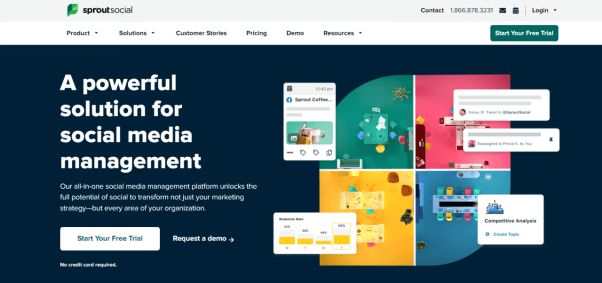
Let’s talk about Sprout Social now. It’s a superb platform for managing social media that has you covered on all counts. Managing your social media presence is like an all-in-one solution.
Sprout Social has a ton of fantastic features that make your life easier. By scheduling posts ahead of time, you can save time and do away with the need for manual posting. Additionally, you don’t need to switch between apps or websites because you can publish content directly from the platform. You can find everything you require in one convenient location.
Additionally, Sprout Social does more than just schedule and publish content. It’s similar to having your own social media command centre where you can track mentions and comments about your brand and reply to them right from the dashboard. But there’s more! Additionally, it provides analytics tools to track engagement, identify popular posts, and analyse your social media performance to improve your strategy. It is comparable to having a personal social media data analyst at your disposal.
The revolutionary social media management platform Sprout Social provides all the necessary features on a user-friendly dashboard. You can easily navigate and manage everything with its well-organised toolkit, saving you time and effort. Furthermore, it contains all the tools you require to up your social media game and improve your online presence. Try it out and see the notable difference it can make!
Later
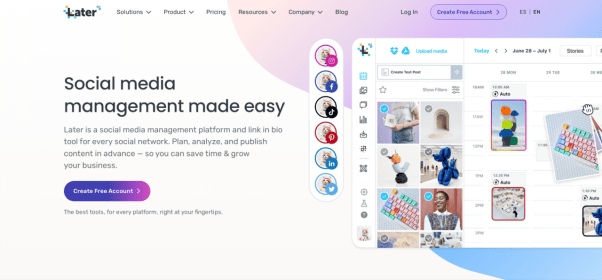
You should check out Later if Instagram is your primary social media platform of choice. You and other Instagram enthusiasts are the target market for this tool. You can do some cool things with Later to up your Instagram game.
It allows you to plan your Instagram posts to start visually. This implies that you can preview your feed before you even publish anything. You can arrange your images, motion pictures, and stories to produce a unified, captivating aesthetic. It’s similar to having a preview of your Instagram grid, allowing you to check that everything looks fantastic and flows smoothly.
But it goes further than that! You can schedule your posts in advance with Later as well. So when you want your content to go live on Instagram, you can specify a particular day and time. Due to the time and effort, it saves you, this feature is revolutionary. You can set aside a chunk of time to write and schedule every post you’ll publish over the coming week or month, and then you can unwind while Later takes care of everything else.
The best thing about Later is how easily it makes it possible to manage multiple Instagram accounts. You can quickly switch between them inside the tool, doing away with the need to constantly sign in and out or maintain various devices, whether juggling personal and business accounts or managing clients’ profiles. Everything is centralised and organised in Later. Furthermore, Later offers insightful analytics on the performance of your posts, including engagement, reach, and follower growth. You can adjust your Instagram strategy and get better results by using this data to understand what’s working and what isn’t.
So, give Later a shot if you’re determined to rule Instagram. It’s an excellent tool for managing multiple accounts, visual planning, scheduling, and post-performance analysis. You’ll have all the resources necessary to build a robust and prosperous Instagram presence.
CoSchedule
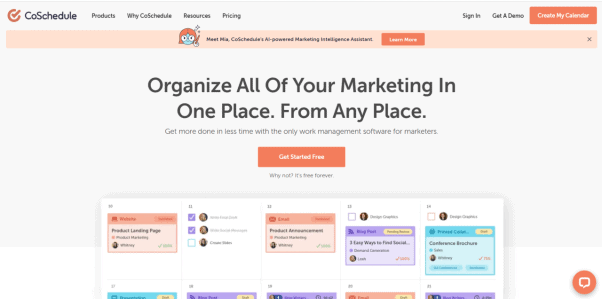
Let’s discuss CoSchedule! It’s a paid tool that prioritises managing your social media content over concentrating on social media advertisements. You can easily schedule your social media posts with CoSchedule, as well as make content calendars, publish blog posts, and do a ton of other awesome things.
The ability of CoSchedule to assist you in organising and planning your social media content is one of its most noteworthy features. Using a content calendar will help you stay on track with your posting schedule and share exciting content with your audience regularly.
Additionally, CoSchedule enables you to plan out your social media posts. This implies that you can dedicate some time to carefully crafting your posts before scheduling them to go live at the ideal time. It’s a great way to keep up a steady social media presence without constantly relying on technology.
CoSchedule provides the option to publish blog posts in addition to social media management. This makes it convenient to manage both aspects of your social media accounts and blog in one location.
CoSchedule is a paid tool, but for those who value effective content management and want to maintain organisation in their social media strategy, it can be a worthwhile investment. Try it out to see how it can make creating social media content more accessible.
AgoraPulse
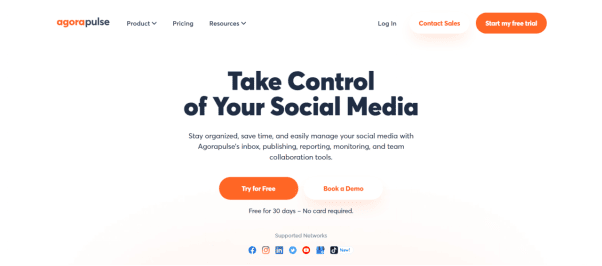
AgoraPulse is a paid tool that will improve your social media management significantly. With AgoraPulse, you can easily schedule and re-share your posts in advance. However, its capabilities go far beyond just organising.
AgoraPulse’s customer relationship management (CRM) tracking is one of its fascinating features. This makes it simpler to interact with and develop relationships with your followers because you can keep track of your interactions with your social media audience. For your social media, it’s like having a personal assistant!
However, there’s still more! Additional tools offered by AgoraPulse might improve your social media management. These can include analytics to evaluate the effectiveness of your postings, comment management and management tools, and even collaboration tools if you work in a group.
You may save time and work by scheduling your articles in advance with AgoraPulse, assuring a regular online presence. You may broaden the audience for your greatest material by using the re-sharing feature. Additionally, CRM tracking enables you to develop relationships with your audience and give them a tailored experience.
AgoraPulse is a vital tool that provides various features to improve the efficiency and smoothness of your social media management overall. Try it out to see how it may enhance your social media presence and streamline your workflow!
Mention
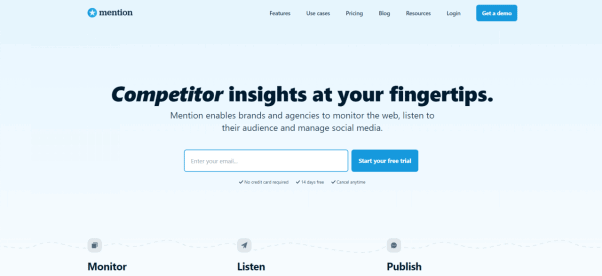
You can track every time your company is referenced on different social media sites with Mention, a paid social monitoring service.
Imagine Mention doing the legwork for you instead of you having to search the internet for mentions of your business actively. Instead, it explores social media sites for mentions of your brand, whether they appear in tweets, Facebook posts, or even Instagram comments.
But there’s more! You can respond to these mentions with Mention immediately from a single, practical dashboard. As a result, you may quickly respond to someone who tweets about your brand without transferring between different social media networks. It saves you time and maintains orderly relationships for your brand.
Businesses and companies who wish to manage their online reputation and effectively interact with their audience will find Mention to be very helpful. Knowing what people say about your brand will let you respond quickly, address any issues, and even use favorable remarks for promotion.
Even though Mention is a paid service, it has a lot to offer companies that place a high value on social media monitoring and practical engagement. If you want to advance your social media management and keep in touch with your audience on various platforms, it is unquestionably something to take into consideration.
TweetDeck
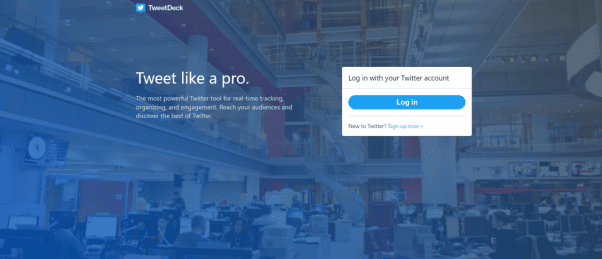
You should be aware of TweetDeck because it is a beneficial tool. The fact that TweetDeck is totally free is its best benefit. It’s a customised program made just for Twitter that offers a stylish interface that makes it simple to manage your mentions, notifications, and even tweet scheduling.
Let me simplify things for you. It’s essential to monitor mentions and notifications when maintaining your Twitter account. You have a central location to keep track of all those interactions with TweetDeck. It’s like having your own Twitter command centre!
However, there’s still more! Additionally, TweetDeck allows you to schedule tweets in advance. This implies that TweetDeck will post your prepared content for you at the appointed time and date. So, even if you’re not online or preoccupied with other activities, your followers will still receive your tweets.
Consider the benefit! You can sit down in a dedicated tweeting session to create a bunch of engaging tweets, scheduling them throughout the day, and voila! As a result, your Twitter feed will remain lively and engaging without you needing to be glued to your screen at all times.
TweetDeck is a valuable tool whether you manage a personal Twitter account or manage social media for a business. It makes Twitter administration easier, saves time, and assures you never miss a crucial mention or forget to submit a tweet.
So, give TweetDeck a shot and see how it can transform your Twitter game!
Popular Social Media Management Platforms
Popular social media management platforms help individuals and organisations manage their presence on social media platforms like Facebook, Twitter, and Instagram. They provide a single dashboard from which users can schedule and publish content, interact with their audience, examine performance analytics, and track brand mentions or comments.

Facebook is a massive social media network used by approximately two billion people daily, making it an unmissable platform. Because of its varied readership, social media management organisations specialise in it and highly suggest it.
Regardless of your sector or ambitions, incorporating Facebook into your social media plan is a requirement.
Now, let’s look at some of the most critical aspects of using Facebook for social media marketing:
Demographics: Various demographics, including seniors, children, young people, men, and women, can access Facebook. With over 50% of US people using Facebook every day, it offers a great chance to interact with various subgroups of your target market.
Uses: Facebook is essential from the social media management perspective for establishing and maintaining connections with current and potential clients. It offers a venue for communication, sharing updates, and audience engagement. Additionally, by building a strong Facebook presence, you can foster brand loyalty, which in turn promotes higher client loyalty and future sales.
Advantages: Facebook offers a vast selection of advertising and content format options, which is a significant benefit. You can use well-written content or aesthetically engaging ads made from photographs or videos to get your point across. Thanks to your adaptability, you can experiment and determine the best technique to engage your audience. It’s important to note that more than 40% of B2B marketers have gained new customers due to their use of Facebook marketing, proving the platform’s potency as a promotional tool.

Consider using Twitter for your business; it’s a fantastic platform. With 330 million monthly users, it may not have as huge a user base as Facebook. However, it still gives businesses access to a group of consumers who engage with companies daily. This may be a significant benefit depending on your target market.
Twitter may not be suitable for every company, but it holds value for specific sectors. So let’s look into some additional information regarding Twitter’s use in social media promotion:
Demographics: According to demographic data, fewer than 25% of American adults use Twitter. However, it offers age-specific individuals between the ages of 18 and 29 competitive access. This group makes up over 40% of Twitter’s user population. Additionally, these users are more likely to use the platform several times daily.
Uses: In contrast to Facebook, Twitter gives news a bigger priority. Additionally, it promotes dialogue between users, whether they represent a brand or a customer. Thus, Twitter may be intelligent if your objective is to interact meaningfully with your target audience.
Advantages: The user base of Twitter is one of its advantages. They make it a vibrant platform since they are engaged and eager to interact with other users. Additionally, Twitter’s particular demographic can be quite helpful for your marketing efforts if your target market includes persons between the ages of 18 and 29.

With over one billion monthly users, Instagram is currently a big platform. As a result, it has climbed to the top of the list of options for social media management. In addition, the platform’s focus on graphics encourages businesses to use innovative tactics to capture and engage their audiences effectively.
Demographics: Instagram is a crucial component of any social media strategy if you’re trying to reach a specific market. It works particularly effectively for establishing connections with users between the ages of 18 and 29 and between 30 and 49. Are you aware that more than 70% of Americans between the ages of 18 and 29 use Instagram? Additionally, it is almost 50% for those aged 30-49. So there are a lot of potential clients there already!
Uses: Instagram is a potent tool for connecting with customers and engaging them, much like Facebook is. You may even be able to use Instagram to create new leads, depending on your sector. Because of this, you can frequently see businesses engaged in retail, entertainment, and beauty on the site.
Advantages: People genuinely adore using Instagram, one of its best features. In fact, approximately 60% of users log in more than once daily! Therefore, they are more likely to see and engage with your content. Therefore, putting time and effort into building a good Instagram presence is undoubtedly worthwhile.
Also Read: 15 Impressive Instagram Feed Ideas in 2024

LinkedIn is the most popular professional social network, with 774 million users. It’s a goldmine for companies trying to hire brilliant employees and position themselves as industry leaders.
LinkedIn can provide a variety of benefits depending on your goals, target market, and business model.
Now let’s explore how LinkedIn can support your social media marketing plan:
Demographics: More than half of recent college grads actively use LinkedIn, demonstrating its enormous popularity among this group. Additionally, 90% of LinkedIn members also use Facebook, which is a nice benefit. So you’re in luck if you’re concentrating on both platforms.
Uses: Like Twitter, LinkedIn is useful for disseminating news-related content, such as business announcements or updates linked to a particular industry. Additionally, it’s an excellent tool for networking with other businesses and enhancing your reputation through content marketing.
Advantages: LinkedIn has numerous significant advantages for businesses, particularly those in the B2B market. Did you know that LinkedIn generates 80% of all B2B leads from social media? Because of this, more than 60% of marketers consider it the best platform for their company.
LinkedIn needs to be high on your list of options if you want to improve your social media marketing.
YouTube

Over two billion people use YouTube, which is a staggering quantity. You might connect with more than 80% of Americans using this platform. In addition, businesses are using their accounts in various ways, including producing how-to videos and releasing behind-the-scenes information, as they increasingly recognize the value of YouTube.
Compared to other social media sites, using YouTube for marketing may involve more time and work, but trust me, it’s worth it. There may be a sizable return on investment.
Let’s examine some salient aspects of YouTube for social media promotion:
Demographics: Similar to Facebook, YouTube has a broad user base in terms of demographics. Users ranging in age from 18 to elders 65 and older can be found. In actuality, 83% of individuals between the ages of 50 and 64 and 49% of those 65 and over frequent YouTube. So, YouTube allows you to connect with people of all ages.
Uses: YouTube presents an excellent chance for your business to offer viewers valuable educational content. You may produce explainer videos that inform viewers about your business or services while exhibiting your products in how-to videos. These kinds of movies significantly impact brand awareness and can even result in sales.
Advantages: One significant advantage of using YouTube is its converting capability. Regarding driving conversions, it outperforms other social media sites, including Facebook. This is especially useful if you sell high-priced goods or services. As a result, YouTube can be a game changer for your business, allowing you to generate significant profits.
So, if you have yet to use YouTube’s potential for your social media marketing approach, now is the moment. YouTube can be a valuable asset for your organisation due to its large user base, various demographics, and high conversion rates.
Also Read: Top 25 Popular YouTubers in India in 2024

Pinterest has over 450 million monthly active users, making it a fantastic platform for companies with a strong visual focus to interact with their target audiences, such as cabinet manufacturers, clothes retailers, and flower shops.
Depending on your target, Pinterest might be a significant asset if you manage social media for a business.
Let me now discuss Pinterest for social media marketing:
Demographics: Pinterest has a predominantly female audience, with more than 40% of women utilising the platform compared to only 16% of men. In terms of age categories, Pinterest is used by approximately 30% to 40% of US adults between the ages of 18 and 64 and by 18% of those 65 and over.
Uses: One of the best applications of Pinterest is to showcase your products non-promotionally. You can highlight the benefits and qualities of your goods, making them more appealing to users. You can also work with influencers to increase the visibility of your products.
Advantages: One benefit of utilising Pinterest is how many people use it to make purchasing plans in the future. According to research, over 85% of youngsters use Pinterest for that reason. Therefore, by being active on Pinterest, you may interact with customers prepared to buy.
Pretty awesome, no? Businesses have a unique chance on Pinterest to interact with their target market and aesthetically appealingly promote their goods and services.
TikTok

TikTok is a behemoth, with over three billion downloads! It’s not only a fun app for lip-syncing and dancing; it may also help companies. Plenty of companies have used TikTok’s ability to grow their audience, work with influencers, and make entertaining videos.
TikTok might be a fantastic addition to your marketing toolkit if you’re trying to engage with a larger audience and your social media plan permits it.
Let’s explore how TikTok can help your social media marketing efforts in more detail:
Demographics: TikTok appears to be primarily geared toward Generation Z, but you might be shocked to learn that 36% of its users are between the ages of 35 and 54. Therefore, if your target audience is in that age bracket, don’t ignore this platform.
Uses: TikTok is a fantastic medium for engaging audiences and focusing on specialised markets. You can successfully attract the attention of your targeted market by participating in current challenges and working with influential producers. To establish a real connection with your audience, make sure to produce compelling and honest films.
Advantages: As TikTok’s popularity soars, it offers a fantastic opportunity to connect with people who genuinely want to learn about your brand. It’s interesting to note that 65% of users say they like it when TikTok creators share material about companies, goods, and services. Consequently, you have an attentive crowd standing by!
Getting Started with Social Media Management for Businesses
Consequently, you already have a general understanding of social media management and what it entails for organisations. Let’s explore how you may use those strategies to polish your social media marketing. I’ll list the top 11 procedures for you in detail. Let’s get going!
Checking your current social media Plan
If you already market and advertise your company on social media, you should set aside some time to evaluate your existing approach. A social media audit helps you determine the success of your social media efforts by identifying what is and isn’t working.
So, what generally happens during a social media audit?
- First, check that your social media goals align with your larger business goals. The next step is to ensure your branding is constant throughout all of the social media platforms you use. It’s crucial to keep your brand’s image consistent.
- It’s critical to monitor your social media metrics, such as follower count, interaction rate, and other pertinent information. Based on the patterns and preferences you find, it lets you evaluate the success of your social media marketing activities and guides your content strategy.
- Reviewing the social media presence of your competitors is also essential. This might give you insightful information about their strengths and potential improvement areas.
- A social media audit provides you with fast feedback on the efficacy of your approach and a starting point for enhancing campaigns to reach targeted outcomes, such as adding followers or raising customer satisfaction.
You can save time and work by having your social media manager handle the audit process for you.
Understanding Your Audience Through Research
One of the fundamental aspects of managing social media is understanding your audience. Creating a successful social media strategy can be challenging if your agency or business needs explicit knowledge of your target audience.
Knowing your target audience will help you find them online and communicate with them more effectively.
Let’s use a garment company as another illustration. Imagine you own a company that sells expensive women’s and reasonably priced men’s casual clothing. Although they both belong to the apparel sector, each segment’s target markets differ.
As part of its social media management services, the company does in-depth audience research to ensure that its marketing funds and ad spending are used to produce customised content and adverts that are appropriately directed to the right users. They concentrate on reaching out to men looking for reasonably priced, fashionable casual attire and women interested in high-end fashion.
When you’re ready to start using social media management services, your account manager will get basic information about your target market. They want to have a strong understanding of who and what interests your audience. Sometimes the agency may ask you about your target audience even before you approach them to inquire about their services. They want to be sure they are aware of your demands and goals.
Picking the Right Social Media Sites
The next step is choosing which social media networks you want to concentrate on. When it comes to managing social media for your business, time is precious, so it’s critical to focus your efforts on the networks that your audience actually utilises.
Now, having profiles on the major social media platforms like Facebook, Twitter, and LinkedIn is a bright idea. You don’t have to allocate your time evenly to each of them, though, which brings me to my next point. Instead, order the platforms according to how frequently your audience uses them.
Analysing demographic data will help you identify which networks are most pertinent to your target audience. If you’ve already conducted a social media audit, you can check your engagement rates to determine which networks did the best. Observe what your rivals are doing as well, don’t forget.
There’s no need to worry if you use social media management services. Your account manager will make suggestions for platforms to concentrate on. They’ll base their recommendations on their research into your sector, target market, and objectives.
Building Your Social Media Plan
Determining a strategy is therefore necessary before your account manager or internal team can begin your social media campaign. In essence, they’ll concentrate on developing a plan for every platform, such as Twitter, LinkedIn, Facebook, and other social media sites, because they all have distinct functions and objectives.
Aside from your target audience, they will consider a few other factors. First and foremost, they will assess your objectives. What exactly does your company hope to accomplish through social media? Do you want to raise brand awareness among consumers or build loyalty among current customers? Or do you have another goal in mind?
They will then look at your industry. Finally, they’ll try to determine what your industry’s target audience is interested in. For example, are there any information voids that your company can fill, such as by writing blog posts or creating guides to share on social media? Or are there influential figures in your industry with whom you can connect on various platforms?
Last but not least, they’ll take a glance at your brand. Then, they’ll ask some questions like what would you say about your brand? Do you have guidelines or procedures in place for interacting with your clients in public? Furthermore, how does your branding affect the colours and media you select to use?
Creating Your Social Media Profiles
While creating or updating your social media pages, it is vital to ensure that they reflect your brand.
Social media management services are helpful in this situation. They provide social media design services in addition to managing your online persona. This indicates that they’ll concentrate on producing polished, captivating visuals that accurately represent your business and make an excellent first impression on users.
Typically, the focus of social media design will be on the static visuals associated with your account, such as:
- Your Twitter banner and background
- Your Facebook banner, icon, and profile picture
- Your Instagram profile photo
After designing your social media accounts and receiving your approval, your social media specialist can begin working toward your marketing objectives. Depending on your goals, they’ll try to improve post engagement or drive conversions.
Creating Effective Ads For Social Media
Based on your company’s objectives and service plan, your social media manager may be able to develop a creative advertising campaign for your organisation. You know, social media advertisements are very much a need these days if you want to increase user engagement and gain more authentic followers.
The issue is that many platforms, such as Snapchat, Instagram, or Facebook, have their own ads method. They provide a variety of ads and have diverse objectives in mind. For instance, let’s take Facebook. They allow you to create ads to promote your brand awareness, get leads, encourage customers to visit a store, and many other things.
Your social media manager will also take into account your target demographic, the media you utilise, the content of the advertisements, the calls-to-action (CTA), the cost-per-click (CPC), and many other things when it comes to ads. These elements are crucial because they have the power to make or destroy the effectiveness of your advertisements. For example, you may have a fantastic CTA but won’t get the desired outcomes if the correct people aren’t seeing it.
You should absolutely have the opportunity to review and approve your ads before they go live. You can then ensure that they are entirely ready to go and flawless. So it’s crucial to have that chance to review and give your approval before they broadcast on the internet, you know.
Creating Your Social Media Schedule
A content calendar for each of your social media accounts is thus typically given to you when you sign up for social media management services. Essentially, you and your expert social media management team may use this calendar as a helpful reference.
Your social media updates, such as company announcements, holiday greetings, and even shared information like blog entries or client photographs, will all be listed in this content calendar.
However, your social media manager will request that you read and approve the material before any of these posts are public. Although it may involve some work on your part, it guarantees that just the content you desire is published.
Making Content for Different Platforms
When you work with a social media consultant, they create much more for your business than just a content calendar. The stuff that is included in it is genuinely made by them. On occasion, they are in charge of every step of content creation, from topic generation to copywriting and media choice.
Many social media specialists, however, engage with graphic designers and copywriters to ensure they provide the finest possible material. This partnership yields content that genuinely interacts with users and accomplishes your company’s objectives.
So here’s the situation. No concerns if you have material scheduled that isn’t created by you, like a wonderful blog post from a well-known influencer promoting your fantastic product. Your social media manager will do the necessary preparation work to ensure that the appropriate link and description are available for sharing on all of your social media profiles. Easy as pie!
Engaging With Your Social Media Followers
Engaging with your followers and those who make comments on your posts is one of the things you’ll frequently be doing when you manage social media. This is crucial for organisations since it keeps clients loyal and significantly raises brand recognition. As a result, having this service is really beneficial.
So, here’s the idea on how service works: the social media manager will get your brand and your company’s vibe and ensure to reflect that in all their interactions with your followers. They’ll stay on top of things, responding to any negative comments, such as when a customer complains about an unpleasant experience.
Your social media manager will ensure that your brand and corporate standards are upheld when interacting with your followers. They will also address any negative comments, such as those about a bad experience.
The way your business interacts with social media users shows that you actually care. This distinguishes your company from rivals, especially in fields where providing excellent customer service is essential. Given that over 65% of individuals use social media for customer service, it might potentially start to serve as a selling factor for customers.
Increasing Your Social Media Presence
Running advertisements isn’t the only strategy your social media expert may use to increase your online profile. They might also work together with reputable companies and influential people in your sector as part of their services.
The result of this collaboration might be that these people promote your business, giving you access to their fan base. In addition, you could potentially attract more followers and customers as a result of the increased brand exposure.
Consider a cabinetry company as an illustration of influencer marketing in action. An influencer might recommend your product as a must-have for their newly renovated kitchen if you sell kitchen cabinets. They would write a post on their social media account detailing their experience, which you could then repost on your own account.
Thanks to this collaboration, you and the influencer have an excellent opportunity to be seen and connect with new audiences.
Keeping Tabs on Your Social Media Metrics
Effective social media management requires constant monitoring of the results of your social media efforts. Imagine having a team of talented social media specialists working tirelessly to monitor the performance of your ads and original content. And what’s this? They’ll give you access to those tasty findings.
Here’s the issue, though. It’s crucial to pick a social media management company—or any other digital marketing company, for that matter—that not only keeps an eye on your social media accounts but also takes immediate action when things start to go south.
When your performance suffers, you want a partner who doesn’t just shrug and offer explanations. No way! Instead, you need someone who will step up immediately and create a sound action plan to make things right. That’s the attitude you need to have when looking for the ideal agency for your company.
You’re guaranteed to see some awe-inspiring results and a killer return on investment when you find that kind of partnership. So keep an eye out and make an informed decision.
How to Discover and Engage with Your Target Audience on Social Media
It’s critical to comprehend who your audience is if you want to generate social media content that genuinely engages them and inspires them to purchase from your company. For the highest return on your investment, you want to target the people most likely to become your clients.
Here’s how to manage the personalities of your social media audience:
- Analyse your current audience data by starting with what you already have. To learn more about your website visitors, use website analytics solutions like Google Analytics. Look for specifics like their age, gender, location, and other information.
- Think about current customer data: Examine the past and present purchases made by your customers. You may learn a lot from this data about your clients, including who they are, where they live, and which particular goods or services they are most interested in.
- Develop audience personas: Using the information acquired, you may develop audience personas. For example, suppose you learn that many of your consumers reside in the exact location and are of a certain age. In that case, you may adjust your social media material to appeal to their interests and preferences.
Understanding your audience is essential for creating social media content that resonates with them and motivates them to purchase.
Strategies for Social Media Listening Management
Monitoring what people say about your brand on social media is the primary goal of social media listening. It’s a method of gauging public opinion and responding to any queries or worries that potential clients might have.
Numerous solutions, such as Sprout Social and Buffer, are available to make social media listening simpler.
Here are some tips for handling social media listening well:
- Choose the appropriate keyphrases: These are the words or phrases you wish to monitor on social media. You can utilise a tool or conduct a direct search for them on the platforms. Think of keywords like your company name, issues relating to your sector, references to your products or services, and more.
- After selecting your keywords, the next step is to keep an eye out for posts and comments that contain those phrases. A social listening tool will take care of this for you if you’re utilising one. You may learn more about how people view your brand, what they say about your business, and how you can improve by reading these mentions.
- Participate in mentions: Engaging with people who bring up your name, goods, or services is crucial. When people are talking about essential issues in your sector, answer their inquiries, take care of any problems they might be having, or sell your products to them.
Keep in mind that social media listening enables you to maintain contact with your audience, comprehend their viewpoints, and improve your brand’s reputation.
Social Media Monitoring and Reporting Strategies
Here are some pointers to assist you better manage your social media reporting:
- Begin with outlining your social media report: Don’t just dump stats into a spreadsheet at random. Consider who the report is intended for, the timeframe it covers, and the insights you want to get from it. Consider organising your report into parts for different areas such as social media advertisements and content.
- Select the appropriate metrics to include in your report: Consider your campaign objectives and what you want to learn. Audience demographics, interests and behaviours, size, reach, top-performing posts, clicks, impressions, followers, likes, mentions, comments, customer communications, and conversions are some metrics and insights to examine.
- Analyse your outcomes:Look for patterns in your data, such as discovering that your most popular articles are videos or that carousel advertising get the most hits. Apply these learnings to future social media initiatives. You may, for example, develop more carousel advertisements and video content to increase engagement and clicks for your firm.
We hope these suggestions assist you in efficiently managing your social media reporting!
Guidelines for Handling Paid Social Media Advertising
Social media ads are essential for attracting real followers, enhancing user engagement, and boosting sales and revenue if you want to create an advertising plan for your business. From Snapchat to Facebook, every social media network has its distinct approach to ads, giving a variety of sorts and objectives. You can, for instance, publish advertising on Facebook to promote brands, generate leads, or encourage customers to visit physical stores.
There are a number of important things to think about while creating social media advertisements:
- Audience: Recognise who you are directing your advertisements at, as this significantly impacts their effectiveness. To acquire the outcomes you want, you must choose the correct audience to target.
- Choose the appropriate format for your advertisements, whether text-only, video, or a carousel of photos. For grabbing attention and promoting interaction, compelling and pertinent material is essential.
- Cost-per-click (CPC) and calls to action (CTA): Create attractive CTAs to compel users to take action, and monitor your CPC to manage your ad spending efficiently.
Here are some guidelines to remember to handle your social media ads effectively:
- Establish a budget: How much are you willing to spend on advertising? Social media networks include a range of payment alternatives, including paying per advertisement view or click.
- Decide on your ad type: Choose the ad type—video, image carousel, or text-only—that best serves your objectives and appeals to your target audience.
- Choose your options for audience targeting: Utilise audience targeting tools to ensure your adverts are seen by those most inclined to buy. Based on variables such as age, geography, and work title, tailor your targeting.
- Keep a tight check on the effectiveness of your ad campaigns by monitoring ad performance. Keep track of metrics like impressions, clicks, and conversions to evaluate your progress and make the required corrections for future success.
You may efficiently manage your social media ads, increase their impact, and accomplish your advertising goals by paying attention to these pointers.
What Are The Benefits of Social Media Management?
Social media management has many benefits for both people and companies. Here are a few key benefits:
- Increased brand awareness: Make your brand more visible and reach a larger audience.
- Improved consumer engagement: Communicate directly with your target audience and cultivate strong relationships.
- Increased website traffic: Drive more people to your website by promoting it on social media.
- Targeted advertising: Use customised ad campaigns to reach specified demographics, interests, or places.
- Competitive advantage: Stay relevant, analyse competitors, and identify industry trends to gain a competitive advantage.
- Reputation management: Reputation management entails responding quickly to consumer problems while maintaining a positive brand image.
- Insights and analytics: Gather helpful information about your target audience’s behaviour and preferences.
In a word, social media management assists you in expanding your brand, engaging with customers, driving website traffic, gaining a competitive edge, managing your reputation, and making data-driven decisions to achieve success in the digital landscape.
Conclusion
Finally, whether you’re an individual or a business, social media management is a necessary skill in today’s digital environment. It’s all about utilising various social media channels to engage your audience, increase brand recognition, and create lasting connections. But here’s the thing: publishing random content isn’t all there is to it. You must be strategic in order to manage social media effectively. This entails organising your content, monitoring current events, and timely interaction with your followers.
Using the correct tools and strategies allows you to realise social media’s extraordinary powerfully. It functions as a hidden weapon, allowing you to boost your online presence, attract a broader audience to your website, and achieve your marketing goals. However, it is critical to remember that social media is more than just a platform for broadcasting. It is all about making real contacts and cultivating an active online community. So prepare to take the leap, accept experimentation, and adjust your strategy to the ever-changing nature of social media.
Understanding the fundamentals of social media management is essential whether you want to work in marketing, manage a small business, or become an influencer. Although it’s not complicated, it does take some skill. So get ready to explore the fascinating world of social media and capitalise on its unparalleled capacity to bring people together.
FAQs
Why is managing social media crucial?
Social media management is crucial for businesses to connect with their target audience, build their online presence, raise brand awareness, increase website traffic, and ultimately increase customer engagement and sales.
What activities are involved in managing social media?
A variety of tasks are involved in social media management, including developing and curating content, planning posts, monitoring comments and messages, analysing performance metrics, interacting with followers, running social media ad campaigns, and keeping up with algorithm updates.
Can I manage my own social media accounts?
Yes, you can manage your own social media accounts, particularly if you have the time and resources to do so. To effectively manage all the tasks, though, can become overwhelming as your business expands. In such circumstances, it might be advantageous to hire a social media manager or contract the job out to a specialised company.
When should we post something new on social media?
Depending on the platform and the preferences of your audience, different posting frequencies work best. Generally, it’s advised to stick to a regular posting schedule rather than posting irregularly. In many cases, posting once or twice per day is sufficient for social media sites like Facebook, Twitter, and LinkedIn. To stay visible on platforms like Instagram, though, you should post more frequently.
How can we assess the efficacy of my social media marketing?
You can monitor different metrics, including follower growth, engagement rate, reach, website traffic from social media, conversions, and client feedback, to gauge the success of your social media campaigns. To assist you in analysing and interpreting the data, social media platforms offer built-in analytics tools in addition to third-party devices.
How does managing social media improve customer service?
Social media management can play a crucial part in customer service by enabling you to respond to questions, offer assistance, and address customer concerns in real time. Direct communication with your customers improves their experience and demonstrates your dedication to their satisfaction.
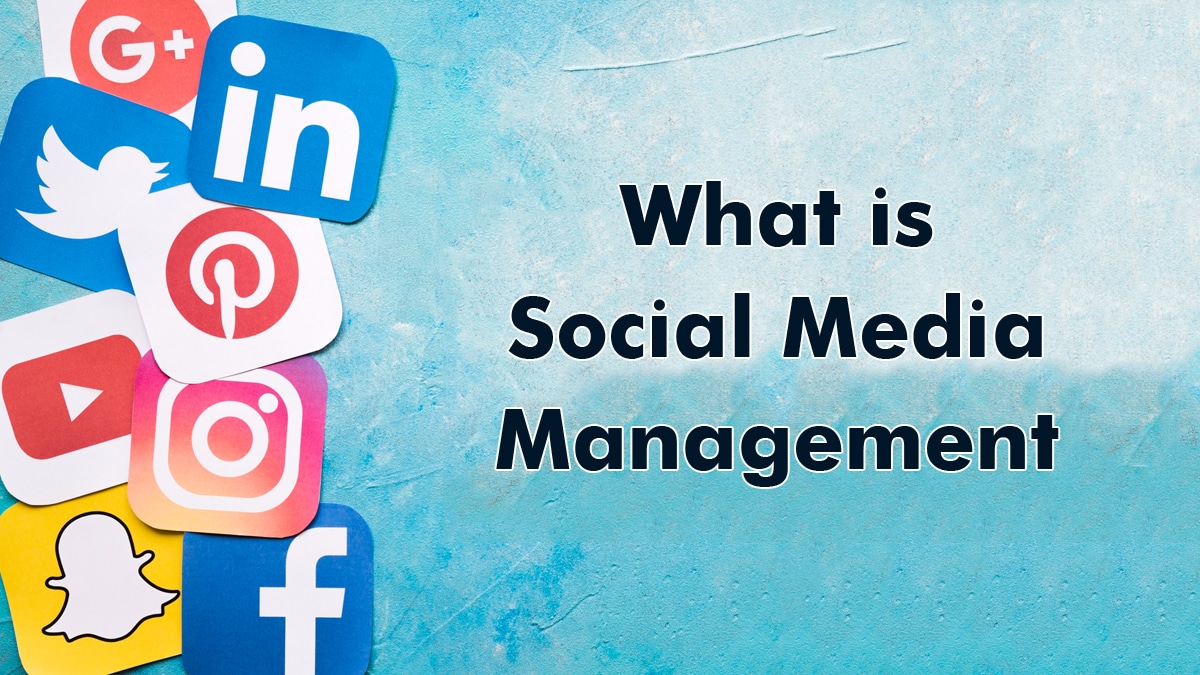




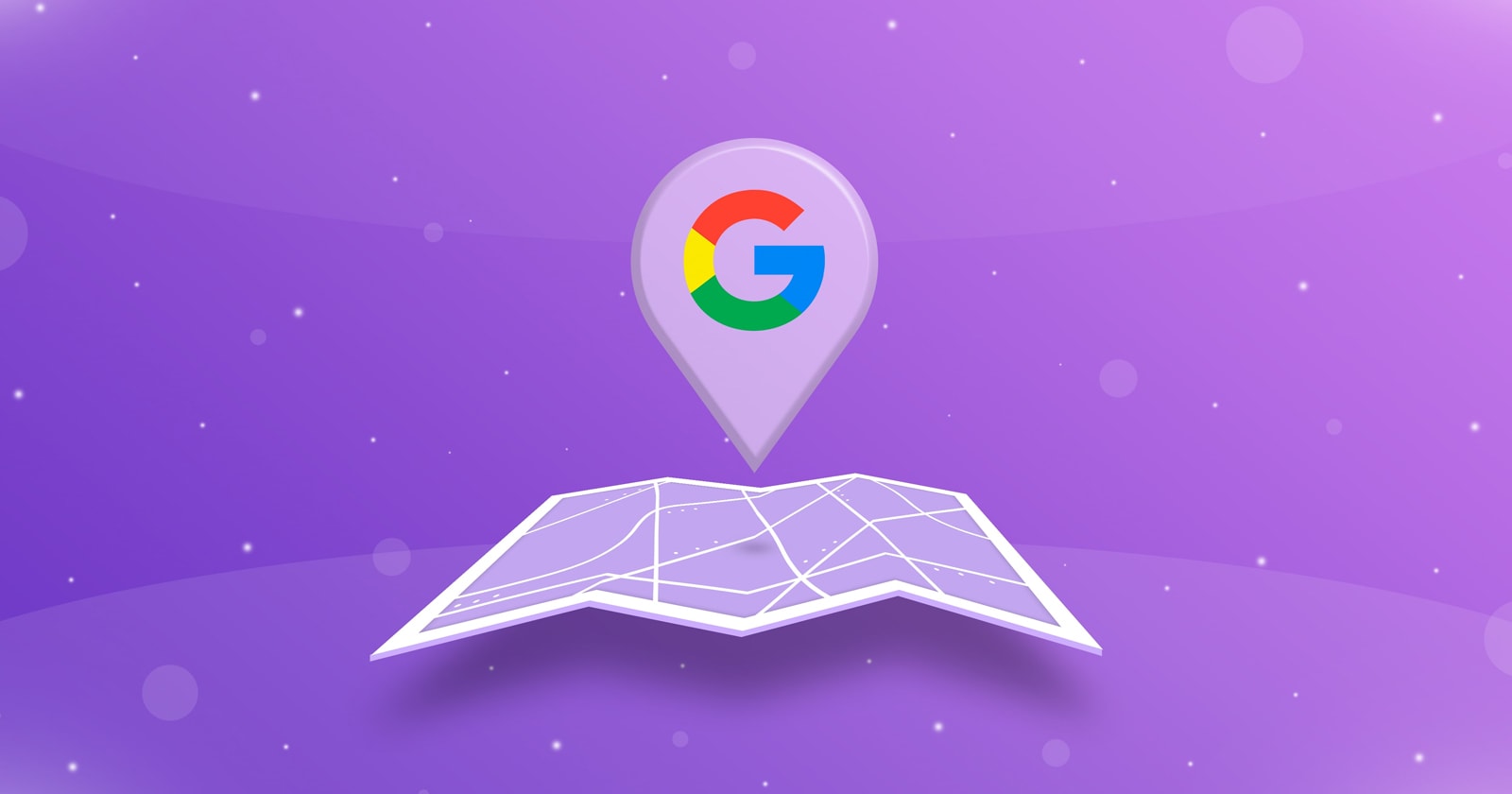



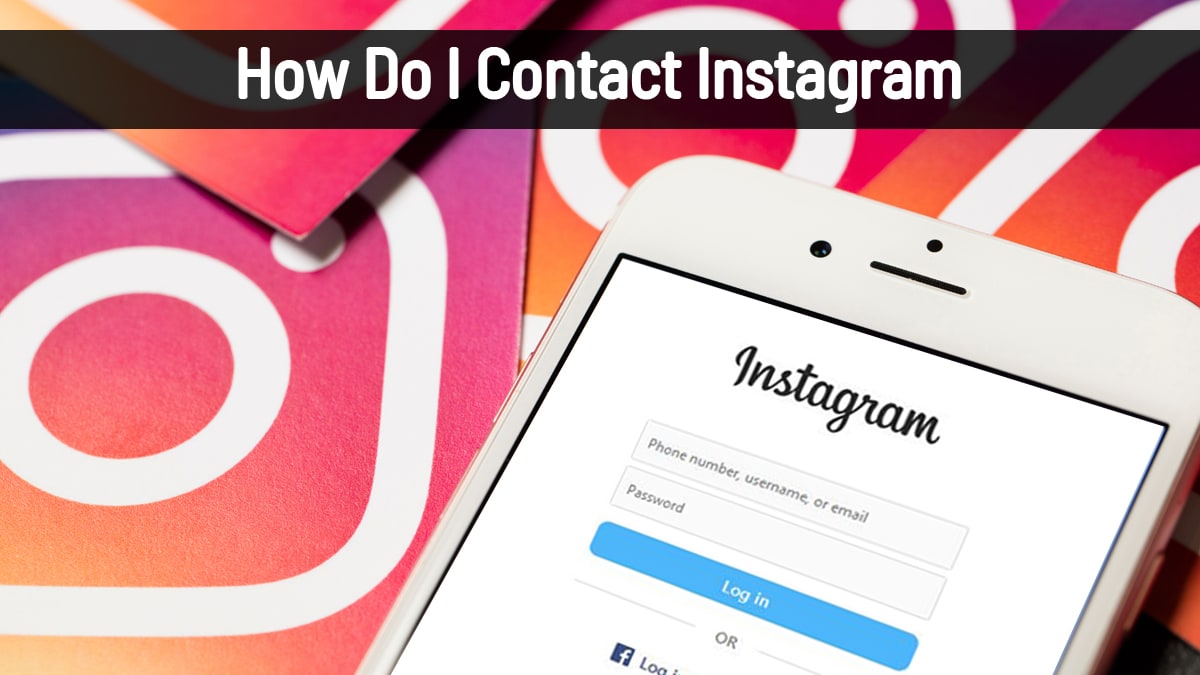
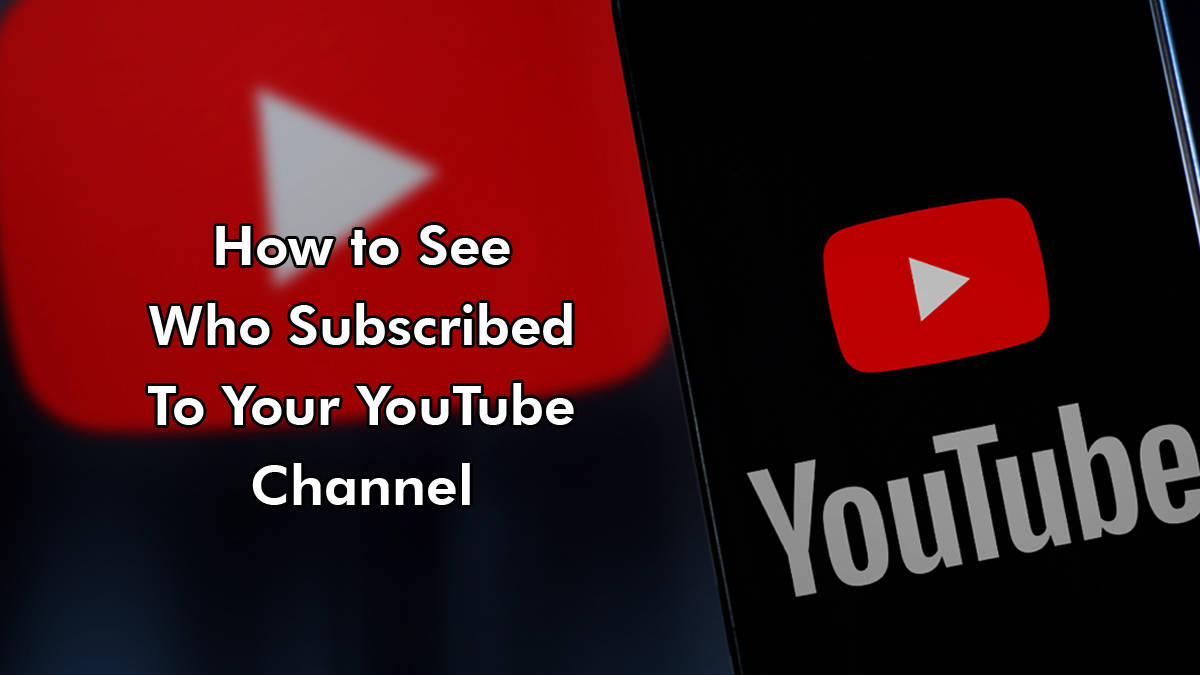
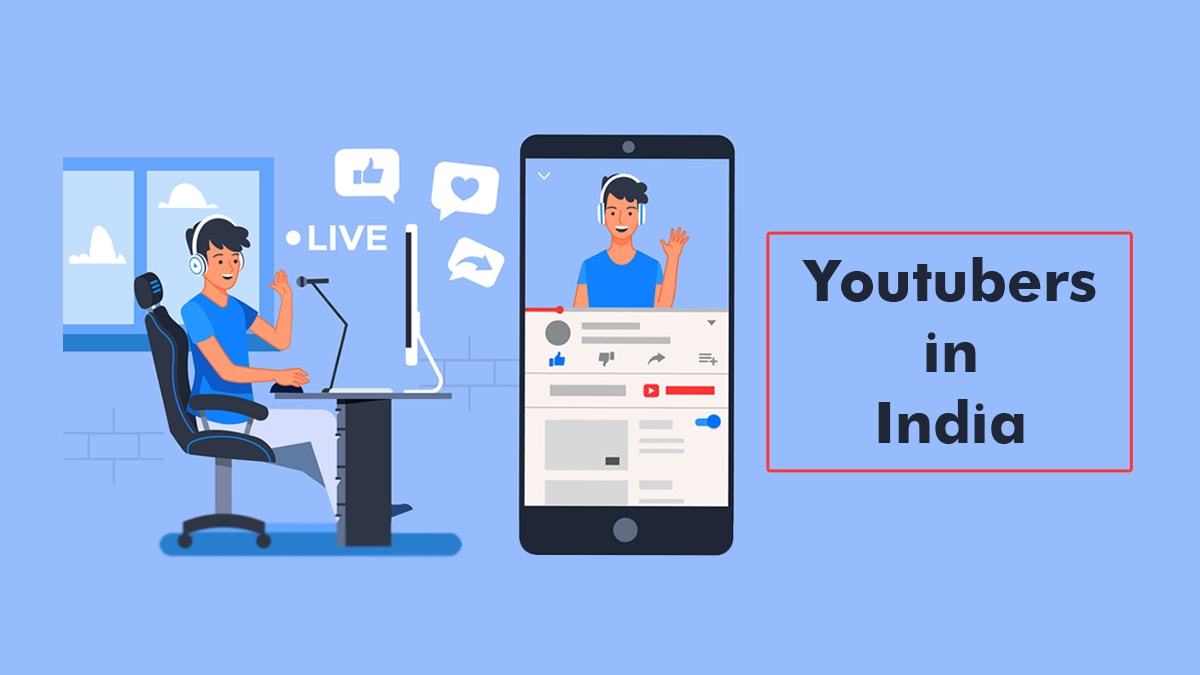

















 RSS Feeds
RSS Feeds